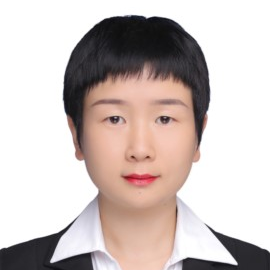Optical Fiber Sensors: Challenges, Opportunities and Future Trends
A special issue of Sensors (ISSN 1424-8220). This special issue belongs to the section "Optical Sensors".
Deadline for manuscript submissions: closed (10 February 2024) | Viewed by 11164
Special Issue Editors
Interests: fiber optic sensors; photoacoustic spectroscopy; acoustic materials
Interests: fiber-optic sensors; fiber integrated devices; fiber gratings
Interests: optical fiber biochemical sensors; photonic crystal sensors; VOC sensors; point-of-care sensor; intelligent fiber sensor
Special Issues, Collections and Topics in MDPI journals
Special Issue Information
Dear Colleagues,
Due to their high sensitivity, resistance to electromagnetic interference, corrosion resistance and ease of deployment, optical fiber sensors have been widely applied in many fields, such as civil engineering monitoring, oil and gas pipeline monitoring, power cable monitoring and fire alarms. With the increasing demand for wide dynamic ranges, fast measurement and real-time monitoring, optical fiber sensing technology faces a series of challenges and opportunities. This Special Issue addresses all types of fiber optic sensors and systems, from their fundamental science background to their application. We are inviting the submission of original papers and review papers detailing the latest advances in optical fiber sensing technology, including optic fiber gyro, novel fiber optic sensing mechanisms, fiber optic sensor system technologies, fiber optic sensor applications, etc.
Dr. Zhenfeng Gong
Dr. Xinpu Zhang
Prof. Dr. Yanan Zhang
Guest Editors
Manuscript Submission Information
Manuscripts should be submitted online at www.mdpi.com by registering and logging in to this website. Once you are registered, click here to go to the submission form. Manuscripts can be submitted until the deadline. All submissions that pass pre-check are peer-reviewed. Accepted papers will be published continuously in the journal (as soon as accepted) and will be listed together on the special issue website. Research articles, review articles as well as short communications are invited. For planned papers, a title and short abstract (about 100 words) can be sent to the Editorial Office for announcement on this website.
Submitted manuscripts should not have been published previously, nor be under consideration for publication elsewhere (except conference proceedings papers). All manuscripts are thoroughly refereed through a single-blind peer-review process. A guide for authors and other relevant information for submission of manuscripts is available on the Instructions for Authors page. Sensors is an international peer-reviewed open access semimonthly journal published by MDPI.
Please visit the Instructions for Authors page before submitting a manuscript. The Article Processing Charge (APC) for publication in this open access journal is 2600 CHF (Swiss Francs). Submitted papers should be well formatted and use good English. Authors may use MDPI's English editing service prior to publication or during author revisions.
Keywords
- novel fiber optic sensors
- micro/nanostructured fiber optic sensors
- distributed optical fiber sensors
- special optical fibers and devices
- sensing mechanisms
- fiber optic sensor systems
- opportunities and challenges for optical fiber sensors
- future trends of optical fiber sensors
- applications and industrialization of optical fiber sensors








